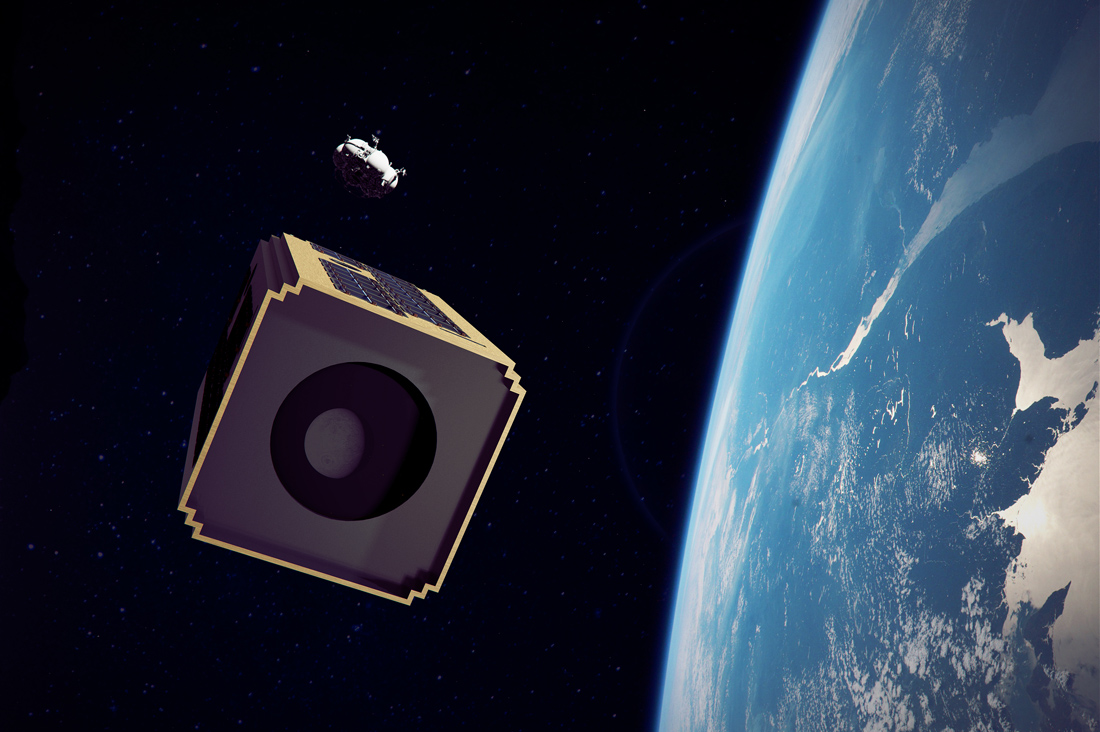Lunar microsatellite is growing

I continue to tell how the development project for the spacecraft, which is supposed to see the Apollo on the moon, is developing. Last weekend, another meeting was held. The venue for the meeting was kindly provided by the Moscow Museum of Cosmonautics at VDNH metro station. Thanks to the atmosphere there, the mood for space exploration was ensured, although at the meeting more organizational issues were decided, not technical ones.
When we started fundraising for the lunar microsatellite projecton the crowdfunding platform Bumstarter, they hoped that there would be those who wanted to help and participate. But they did not expect so many enthusiasts to respond to the call to work together. They offer help both professionals in space and space science, as well as students and representatives of professions not related to space.
We suddenly faced the task of organizing the work of all. To entrust everyone with a feasible task and achieve the most effective application of the efforts of those who decided to participate in an interesting business. That is, a crowdfunding project is also becoming a crowdsourcing project.
At the meeting, they decided that a forum was needed, where those who wish to help in the work will be invited. There it will be possible to discuss areas of activity, propose ideas, choose optimal solutions. To work at the team level, the most convenient project management application is now selected. First tried Asana, now we are still looking at Slack.

The second issue on the agenda was how to most effectively spend funds that exceeded the requested amount of 800 thousand rubles. Over the past week, a list of equipment has been compiled that is required to solve the problems associated with the development of prototypes of command and high-speed radio and laser communication lines.
The discussion of the project with ballistics specialists led to the expected, in general, conclusions - the microsatellite is starting to grow. Still, the interplanetary medium requires a complex design of the device, so the mass begins to grow steadily. Moreover, it is not a fact that the price will increase proportionally. If we try to stay in the previously planned sizes and weight of about 50 kg, then we will have to look for the most advanced developments in rocket micromotors in the world market or even order a separate development. Their price will be considerable, and the operation is risky, as with all innovations. The way out of this complexity is to take serial, but larger. This can already be found in Russian manufacturers.

It is now clear that you can say goodbye to the current mustachioed Tardis.

More likely, we will get something more like this LQSat, which was recently launched from China.

Only it will still have to add a plate of the on-board radio complex, up to a meter in diameter.
Of the good news, the more massive the satellite, the longer it will fly in low moon orbits. True, the growing dimensions and mass dramatically reduce our chances of flying with the first ride. But here we proceed from the principle that it is better to make a reliable efficient device, and not jump at any cost on the outgoing apron.
At the general meeting, journalists again came to us, even two television channels: Mir24 and NTV. A very good report has already been released on Mir24 about our development and, in general, about lunar exploration.
Several good materials and interviews about our initiative in Russian were
published in the
press : TJournal Vesti.Online.
And English:
The Moscow Times
Popular Mechanics .
As a sign of support and recognition from the official space science, we took the mention of our project in the popular science lecture at the festival at Moscow State University "Science 0+", doctor of physical and mathematical sciences, head of the laboratory of space gamma spectroscopy of the Institute for Space Research of the RAS (IKI RAS) Igor Mitrofanova.

Now we see that our initiative is really in demand, many would like for us to succeed, and this perfectly motivates us to continue working. If someone wants to take part in the project with their own head, experience and hands, write in more detail what you are ready to do by mail: moreyasnosti@gmail.com. And first look at the table of contents of the Project Description , you may immediately find yourself a suitable topic.
Updates about the project can be found inproject blog on GT or a VK group .
